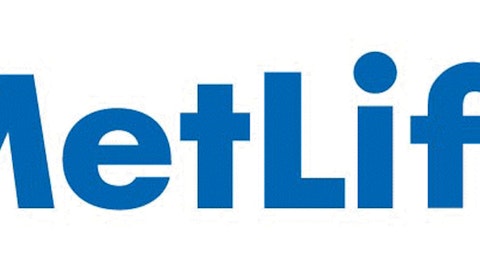Investors in property & casualty insurance companies (often referred to as P&C insurers) face a major hidden risk. An environment of rising interest rates threatens to undermine the financial stability of this industry. Investors who own P&C insurance stocks need to understand the potential danger and make an informed decision about whether to continue to hold these stocks or not.
How interest rates affect insurance companies
Insurance companies are particularly vulnerable to an increase in interest rates. These companies typically hold large amounts of cash and marketable securities, which they use to pay customer claims. As interest rates rise, the underlying value of securities held by insurers will naturally decline.
The insurance industry is highly regulated, and insurers have rigid standards regarding the investments that they can make. As a general rule, the cash that insurance companies receive in the form of premiums from customers must be invested in safe areas such as Treasury bonds and other low-risk securities.
Interest rates have been rising over the past month, following new comments from Ben Bernanke about the Federal Reserve’s bond buying program. Since interest rates and bond prices move in opposite directions, a rise in interest rates means that the value of bonds held by insurers is dropping.
Bernanke’s statements have indicated that the Fed will likely moderate its monthly purchases later this year, with the ultimate goal of curtailing the program completely in 2014.
Currently, the Fed is buying $85 billion worth of Treasury bonds and mortgage-backed securities a month. This program has helped to support prices for high-quality fixed-income products — the same securities in which P&C insurers are heavily invested.
With the Fed now indicating that it will gradually dissolve its bond-buying program, interest rates are moving higher, and prices for treasury bonds are dropping. Of course, as prices continue to decline, the long-term securities held by insurance companies will decline in value.
Life insurers are a bit less vulnerable to interest rates, since the companies have obligations which are statistically much more long-term in nature. This allows life insurance companies to match long-term treasury investments with their liabilities so that they can more easily manage interest rate shifts. These companies also typically offer investment products such as annuities which create more company income during higher interest rate periods.
Property and casualty insurers, however, are in the most danger because their liabilities are shorter-term in nature. If P&C insurers need to sell treasury bonds at lower prices, they will be forced to write down the value of these assets, which reduces the company’s book value.
Vulnerable insurance stocks
Three P&C insurance stocks look particularly dangerous as interest rates begin to move higher.
XL Group plc (NYSE:XL) has a wide book of business which includes industrial, commercial and professional organizations, and the company also acts as a reinsurance firm to other insurance companies.
As other insurers face the risk of declining bond prices, XL Group plc (NYSE:XL) could be required to cover liabilities of companies to which it has sold reinsurance contracts. Given the company’s expansive business and $11.9 billion book value, XL Group plc (NYSE:XL) has a lot of exposure to declining bond prices.
Part of the reason Cincinnati Financial Corporation (NASDAQ:CINF) trades at a higher valuation than its peers is because the company pays a 3.5% dividend yield. But as interest rates increase, investors are able to find better yields and less risk with fixed income securities. These investors are beginning to move capital out of stocks with high dividends and into fixed-income securities, pressuring stock prices for dividend paying companies.
Consider selling your P&C insurance stocks
Zachary Scheidt has no position in any stocks mentioned. The Motley Fool has no position in any of the stocks mentioned.
The article A Hidden Danger for Insurance Stocks originally appeared on Fool.com.
Zachary is a member of The Motley Fool Blog Network — entries represent the personal opinion of the blogger and are not formally edited.
Copyright © 1995 – 2013 The Motley Fool, LLC. All rights reserved. The Motley Fool has a disclosure policy.






